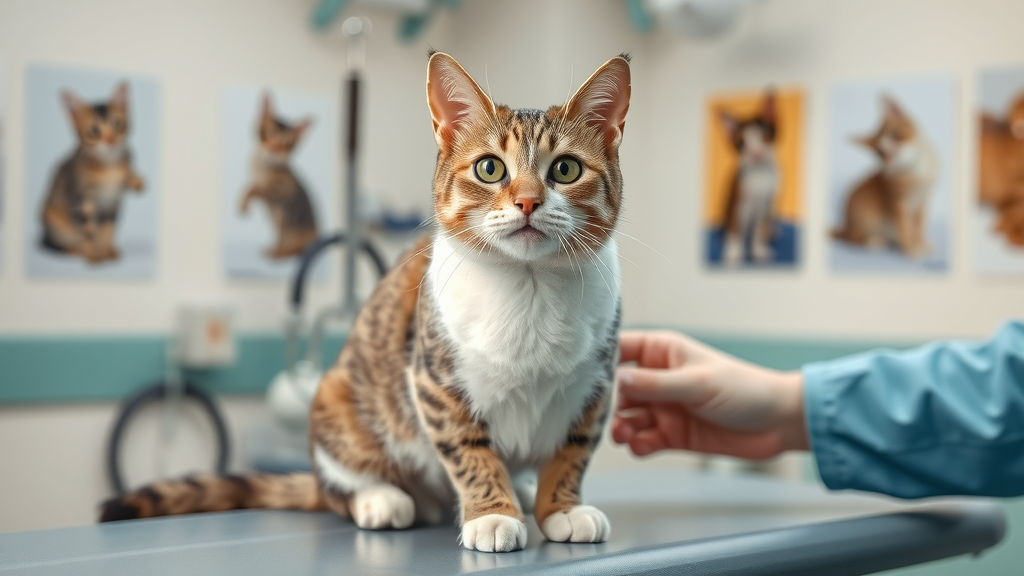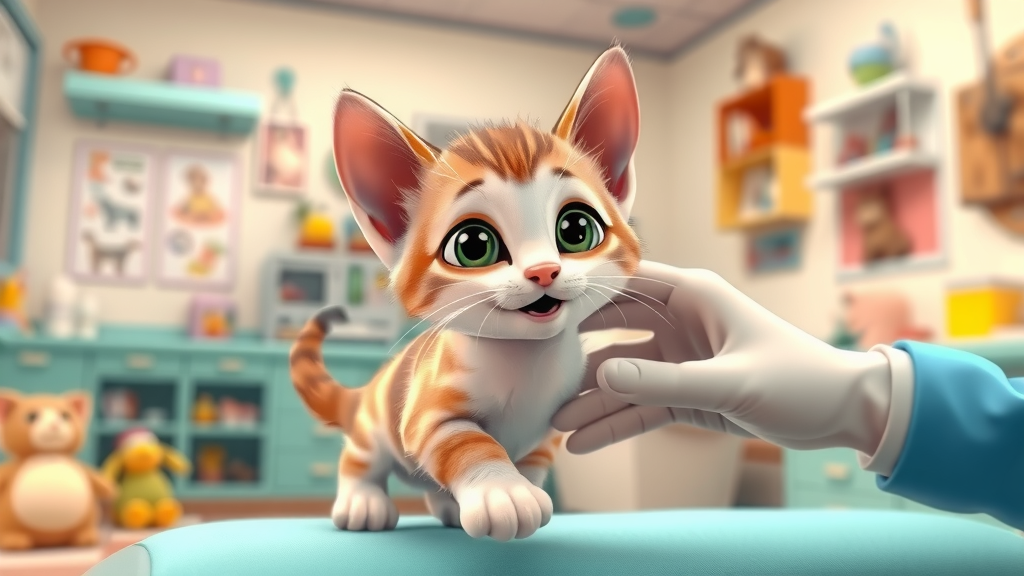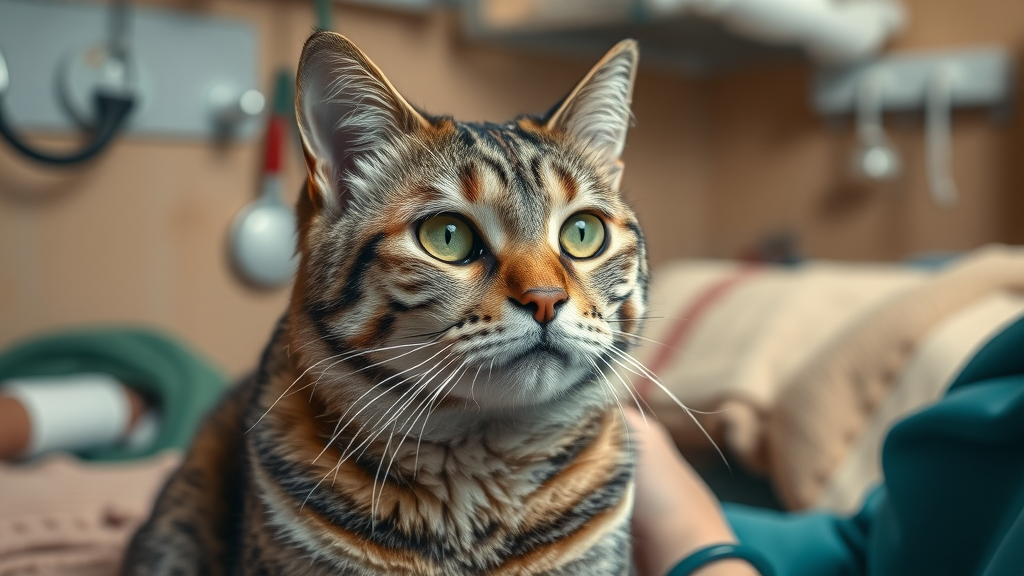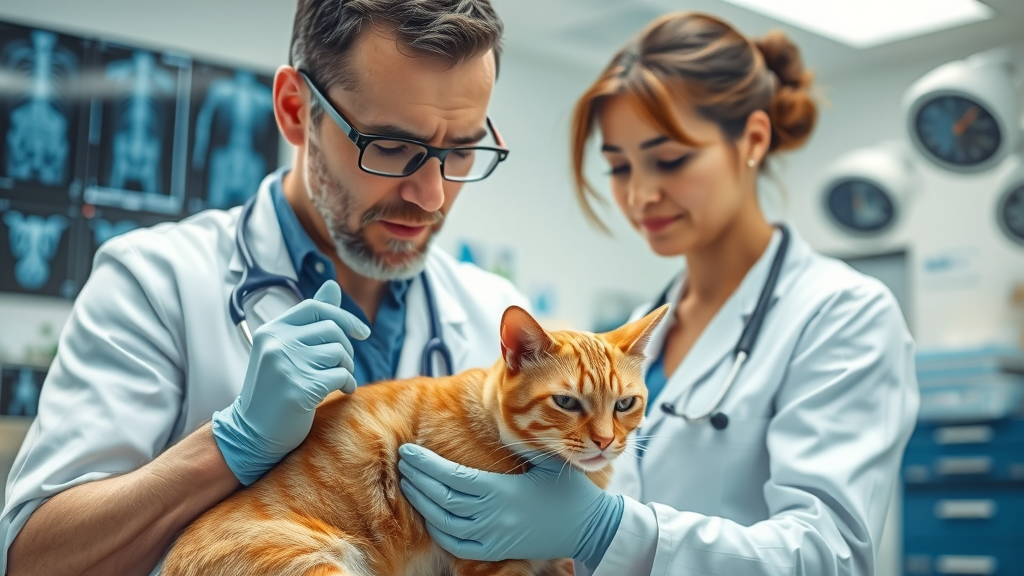Have you ever wondered if you’re doing enough to keep your cat healthy—are yearly checkups enough, or is your feline silently facing health issues? Knowing how often should cats see a vet can be the difference between a thriving companion and one quietly suffering from hidden illnesses. In this comprehensive guide, we’ll reveal the expert-backed schedules, why annual wellness exams matter, and how regular cat to the vet visits add years of vitality to your beloved pet’s life. Read on to discover what your vet wishes every cat owner knew!
How Often Should Cats See a Vet? Unveiling the Truth About Cat to the Vet Frequency
The answer to how often should cats see a vet? isn’t as clear-cut as once a year for everyone. The frequency depends on your cat’s age, overall health, and lifestyle. Adult cat companions typically need at least one annual wellness exam to check for early signs of disease , update vaccinations, and manage their weight. However, kittens, seniors, and cats with chronic health conditions —such as kidney disease —require more frequent vet visits for optimal care.
Regular vet visit schedules enable early detection of illnesses, often before your feline friend shows symptoms. Annual or bi-annual vet checks provide essential preventive care , minimize the risk of infectious diseases, and help manage behavioral or nutritional needs. Veterinarians recommend creating a routine that fits your cat’s specific life stage to ensure they enjoy a healthy life for years to come.
Why Regular Vet Visits Are Key to Your Feline Friend’s Wellbeing
- Early detection of illness
- Updated vaccinations and parasite prevention
- Professional dental care
- Lifestyle and behavior advice

What You'll Learn from This Expert Vet Guide on Cat to the Vet Schedules
- Optimal frequency for cat to the vet appointments at every life stage
- What happens during a typical wellness exam
- Why preventive care matters for every feline friend
- How to recognize when immediate vet attention is required
- Answers to your most common cat visit questions
Understanding Vet Visit Schedules by Life Stage: From Kitten to Senior Cat
Your cat’s age plays a huge role in determining how often your pet should see a veterinarian. From playful kittens to wise senior cats, each stage brings unique health needs and risks. Kittens are especially vulnerable, requiring a series of wellness visits and vaccines to prevent infectious diseases like feline leukemia and feline calicivirus . For a healthy adult cat , annual visits are crucial for monitoring early signs of disease and maintaining vaccination schedules. Meanwhile, senior cats over 7-10 years of age benefit from bi-annual exams, as they’re more prone to chronic health issues such as kidney disease or arthritis.
No matter your cat’s stage, a well-timed vet visit allows you to spot health problems early, make timely lifestyle adjustments, and ensure your feline friend remains comfortable and content throughout all nine lives. Let’s break down what each life stage needs.
Kitten Care: Vet Visits During the First Year
- Initial wellness exam to establish baseline health and detect congenital problems
- Vaccine schedule and boosters for core diseases: Feline viral rhinotracheitis, fvrcp vaccine , feline leukemia vaccine
- Spaying/neutering timeline to prevent unwanted litters and certain health risks
Kittens should see the veterinarian every 3-4 weeks until they’re about 16 weeks old. Each vet visit builds on the last, gradually introducing vaccines and health checks that protect against infectious diseases . Your vet will also discuss nutrition, parasite prevention, and when it’s best to have your kitten spayed or neutered . These early wellness exams set the stage for lifelong health and socialization.

Adult Cat to the Vet: Frequency and Care Essentials
- Recommended annual wellness exam to catch early health issues
- Parasite prevention and vaccine updates (such as rabies, leukemia if at risk)
- Nutrition and weight management to support a healthy adult
For a healthy adult cat (ages 1–6), vets recommend annual wellness check appointments. These include thorough assessments for early signs of disease, dental exams, and professional advice on diet, routine parasite controls, and behavioral concerns. Keeping up with fvrcp and rabies vaccines is vital, even for indoor cats. Routine checkups deliver peace of mind while ensuring your adult cat stays on track for a healthy life .
Senior Cat Vet Schedules: Why Age Requires More Frequent Attention
- Bi-annual wellness exams for senior cats (7+ years of age)
- Screenings for chronic conditions and mobility issues
- Reviewing quality of life and comfort measures
As cats age, risks for chronic disease , cognitive decline, and pain increase dramatically. Regular bi-annual exams for senior cats provide opportunities to screen for kidney disease , diabetes, arthritis, and other age-related health issues. These visits often include blood tests , urine screening, and discussions about subtle lifestyle or behavior changes. Frequent vet attention allows your senior cat to remain comfortable and healthy in their golden years.

Comparative Table: Vet Visit Frequency by Cat Life Stage
| Life Stage | Vet Visit Frequency | Key Care Focus |
|---|---|---|
| Kitten | Every 3-4 weeks until 16 weeks | Vaccines, exams, spay/neuter |
| Adult Cat | Annually | Wellness exam, vaccinations, weight/behavior check |
| Senior Cat | Every 6 months | Chronic disease screening, pain management |
What is Included in a Cat to the Vet Wellness Exam?
A comprehensive wellness exam is the backbone of your cat’s preventive care routine. During this physical exam , your vet will thoroughly evaluate your cat from nose to tail, checking for early signs of illness and assessing everything from weight to dental health. For adult cats , these visits are critical for preventive care . For senior cat patients, vets add extra screenings for chronic diseases based on years of age. Here’s what you can expect each time you take your cat to the vet for a wellness exam.
Routine wellness checks don’t just spot medical issues—they provide the chance to adjust nutrition, discuss behavior, and receive expert tips for a healthy life . Understanding each step ensures you and your feline friend get the most from every vet visit .
Step-by-Step Breakdown of a Wellness Exam for Feline Friend Health
- Full physical examination
- Vaccination review and administration
- Parasite prevention and dental check
- Nutritional assessment
- Behavior and lifestyle review
- Senior screening tests (as age-appropriate)

“Annual wellness exams help detect silent health problems before they become emergency situations.” — Dr. L. Nguyen, DVM
Preventive Care: Beyond Basic Vet Visits for Adult Cats and Senior Cats
Preventive care is more than a basic shot schedule. It means actively protecting your feline friend from infectious disease , dental decay, and subtle chronic illnesses that can develop quietly. Whether you’re an owner of adult cats or caring for senior cats , prioritizing regular wellness exams alongside targeted preventive steps can offer years of better health and happiness.
While vaccinations and parasite treatments are essential, benefits also include regular dental cleanings, discussions about nutrition, and behavioral consultations. The more involved you are with your cat’s routine medical care, the greater their chances for a long, healthy life .
Vaccinations, Parasite Prevention, and Dental Health
- Why core vaccines are essential for indoor cats and outdoor cats
- Parasite threats even for indoor cats
- Professional dental cleanings and oral checks
Every cat to the vet visit should include a discussion of vaccinations such as fvrcp vaccine , rabies, and feline leukemia . These immunizations don’t just protect your pet—they also safeguard your household against infectious disease . Even strictly indoor cats face risks from parasites such as fleas, ticks, and worms, which can hitchhike indoors on clothing or shoes. Your adult cat needs professional dental cleanings and oral health exams to prevent painful tooth loss and infection.
Supplemental Preventive Care Considerations
- Senior cats: annual bloodwork, urine analysis, and blood pressure screening
- Weight management consultations for healthy life
- Microchipping and lifestyle adjustments
Older cats benefit from regular blood tests , urine screenings, and blood pressure checks, which are vital for uncovering hidden conditions early—especially common issues like kidney disease . Vets may also recommend routine weight assessments, personalized food plans, and microchipping to improve identification and overall safety. By tailoring preventive care to your pet’s evolving needs, you ensure your feline friend enjoys more comfort and vitality as they age.
When to Take Your Cat to the Vet Urgently: Warning Signs Every Cat Owner Should Know
While regular checkups safeguard your pet’s health, some symptoms signal an immediate need for a vet visit . Cats are masters at hiding pain, so any sudden change in eating, bathroom habits, or demeanor could indicate a major underlying health issue . The key to responsible ownership is recognizing early signs and acting quickly—delay can result in more severe illness or even be life-threatening.
Any of the following symptoms means your cat needs to see a vet right away. Don’t hesitate—getting prompt care can save lives and prevent suffering.
Critical Symptoms in Your Feline Friend Requiring Immediate Vet Attention
- Sudden loss of appetite or vomiting
- Difficulty urinating or breathing
- Open wounds, limping, or behavioral changes
- Seizures, lethargy, collapse
If your feline displays any of these warning signs, taking your cat to the veterinarian immediately is crucial. Conditions like urinary blockages, poisoning, or advanced kidney disease can worsen quickly. Trust your instincts—cat owners are often the first to notice when something isn’t right, and swift medical attention ensures the best outcome for your feline friend .

Watch as veterinarians explain recommended vet visit schedules for cats at every age.
For a quick, expert rundown on cat to the vet schedules, watch real veterinarians discuss best practices, signs to watch for, and how to keep your cat healthy at every stage of life. This visual guide makes scheduling your vet visits easy and stress-free.
A walkthrough of a real veterinary wellness exam for kittens, adult cats, and senior cats.
Curious what really happens in the exam room? This video walkthrough takes you step-by-step through a typical vet appointment—from playful kittens to wise senior cats —so you always know what’s coming and how it benefits your feline friend .
People Also Ask: How often should I take my indoor cat to the vet?
Indoor Cat to the Vet Guidelines: Frequency and Special Considerations
Indoor cats should see the vet at least once per year for a complete wellness exam, vaccinations, and parasite checks, even if they show no signs of illness. Senior or chronically ill indoor cats may require more frequent visits. Early detection of disease is the goal, regardless of your cat's lifestyle.
People Also Ask: How often should a cat go for a checkup?
Checkups and Cat to the Vet Schedules for All Ages
All cats should undergo a vet visit at least annually for preventive care and a physical exam. Kittens need more frequent checkups, while senior cats benefit from checkups every 6 months to assess for age-related diseases and discomfort.

People Also Ask: Is it okay if I never take my cat to the vet?
Risks of Skipping Cat to the Vet Visits
Neglecting routine vet visits puts your feline friend at risk for undetected diseases, dental problems, and preventable health conditions. Regular vet visits are essential for vaccinations, longevity, and overall quality of life.
People Also Ask: Does my cat need bloodwork every year?
Bloodwork Guidelines for Cats: Is Annual Testing Necessary?
Annual bloodwork is highly recommended for adult and especially senior cats during veterinary visits. Blood tests help diagnose hidden illnesses early, guide preventive care, and assess organ function, making them a critical part of long-term health.
Frequently Asked Questions About How Often Should Cats See a Vet
-
Do indoor cats need annual vet visits?
Yes. Indoor cats may have less exposure to outdoor dangers but are still at risk of dental disease, genetic issues, and conditions like diabetes or kidney problems. Annual exams help catch problems early. -
Are there breed-specific vet visit requirements?
Certain breeds are predisposed to specific health issues, such as heart disease in Maine Coons or respiratory issues in Persians. Your vet may recommend more frequent monitoring. -
What happens if my cat misses a vet appointment?
Missing appointments can delay important vaccines, parasite prevention, and early detection of illness. Contact your veterinarian to get your feline friend back on schedule as soon as possible. -
Can I combine vaccinations and other preventive treatments in one visit?
Absolutely! Most veterinarians combine vaccines, parasite preventatives, and health screenings during annual or semi-annual visits to maximize convenience for cat owners and minimize stress for your pet.
Key Takeaways for Building a Healthy Life with Routine Cat to the Vet Visits
- Regular vet visits promote early detection and preventive care
- Frequency depends on life stage—kitten, adult, or senior
- Wellness exams check for physical and behavioral well-being
- Senior cats require more attention for a comfortable, healthy life
Stay One Paw Ahead: Get Trusted Cat to the Vet Advice Delivered
Caring for your pet just got easier. Get expert advice, product tips, and pet wellness updates delivered monthly. 🐾 Sign up today and stay one paw ahead.
Action Steps: Schedule your cat’s next wellness exam, monitor for early signs of illness, and maintain preventive care for every stage of your feline friend’s healthy life.
Regular veterinary visits are essential for maintaining your cat’s health and detecting potential issues early. The frequency of these visits varies based on your cat’s age, health status, and lifestyle.
Kittens (Under 1 Year): Kittens require multiple vet visits during their first year for vaccinations, parasite control, and spaying or neutering. It’s recommended that kittens be seen by a vet once every 3-4 weeks until they are about four months old. ( mvavets.com )
Adult Cats (1-7 Years): Healthy adult cats should visit the vet at least once a year for routine check-ups. These visits typically include health screenings, dental care, and necessary vaccinations. Regular monitoring helps detect conditions early, such as kidney disease or thyroid issues, which are more manageable when caught early. ( mvavets.com )
Senior Cats (7+ Years): As cats age, they may need more frequent visits. It is advisable for senior cats to have bi-annual vet check-ups. During these visits, more comprehensive tests might be conducted to monitor ongoing issues or new health concerns typical in older cats, like arthritis or heart problems. ( mvavets.com )
In addition to regular check-ups, be vigilant for any changes in your cat’s behavior, appetite, or litter box habits, as these could indicate underlying health problems requiring immediate veterinary attention.
By adhering to these guidelines and maintaining open communication with your veterinarian, you can help ensure your feline friend enjoys a long, healthy life.
 Add Row
Add Row  Add
Add 




Write A Comment